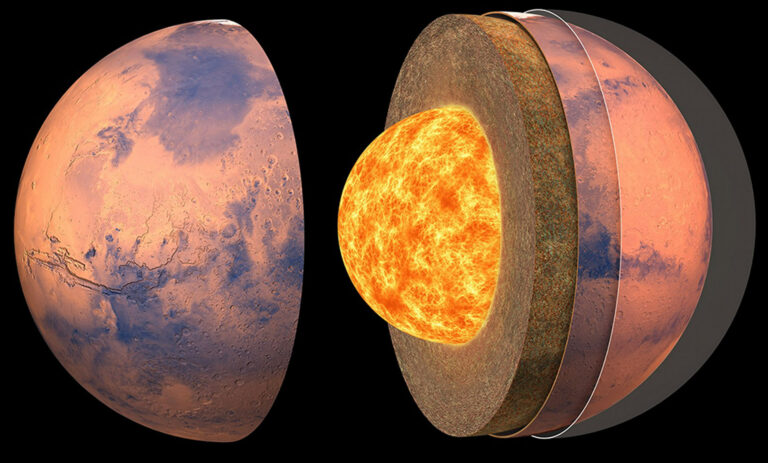Mars fully formed, complete with crust, within 20 million years of the solar system’s birth
Maybe we’re the aftermath of an advanced civilization sending their last hope of avoiding extinction to the closest planet to mars they found habitable
Recent studies show that the formation of Mars’ crust happened within only 20 million of the system’s creation time which is even faster than the creation of Earth’s crust. Studying the zircon crystals in the Martian meteorites scientists have found out that Mars had its first crust by about 4. 547 billion years ago. Such a rapid evolution indicates that Mars may have had a one-hundred-million-years’ worth of starting lead on Earth in terms of factors that can support life. These results suggest that the atmosphere of Mars was probably tenuous leading to quick cooling of the planet. However, the slower rate of cooling that occurred on earth was due to another impact that made the earth to re-solidify thus changing its dates of formation.
In the first 20 million years of formation of solar system, the planet Mars was formed along with even its crust. This rapid formation of Mars might have made a big difference in the habitability of Mars as compared to the earth.
Another fanciful Martian soil structure, also relating to zircon crystals in Martian meteorites, came to light on June 27, in the Nature journal: the planet began building its first crust about 4. Around 547 billion of year ago, which is approximately 20 million years after the formation of the solar system planets.
The outer crust is the last layer of the terrestrial planets’ formation as probe by the examples as Mars, The Earth, Venus, and Mercury. This process starts with the building up of particles from the protoplanetary gas disk and molten material leading to the formation of a hot magma ocean. When the entire phenomenon of magma ocean is solidifying, it produces a dense metallic core and then the outer crust. Normally, the whole process may take somewhere from 30 to 100 million years.
However, study on Martian zircons carried out by planetary scientist Laura Bouvier from the University of Copenhagen reveals that the formation of Mars’ crust was much faster. The team analyzed seven zircon crystals and said that isotopes are atoms that could be unstable and decay at fixed rates. Using this decay it was possible for them to estimate the number of years that had elapsed by observing the ratios of uranium-235 to lead-207 and uranium-238 to lead-206 and found that the zircon crystals are up to 4. 476 billion years old.
Another isotopic decay system that the researchers applied was lutetium-176 to hafnium-176 which, they found that the oldest Martian crust is even older. Such rocks should have initially had more hafnium than is presently observed in zircons crystallizing from them. Relying on the content of hafnium and the rate of decay of lutetium-hafnium, they figured that the primary magma crust cooled about 4. 547 billion years ago.
The crust was later partially melted by asteroid impacts, however these impact did not turn the entire crust into a magma ocean again. However, the zircons for which we are searching to date back to the young Mars were formed when this planet cooled and congealed once more around 4. 476 billion years ago.
“The discovery that Mars cooled so rapidly also places constraints on how large its atmosphere could have been,” said Linda Elkins-Tanton, a planetary scientist at Arizona State University and the author of a News & Views commentary on the work. The rapid cooling would have resulted into a thin atmosphere since it is now estimated how much water and carbon dioxide the magma ocean released to form early atmosphere. In Mars case, the layer of atmosphere would have been thin enough to allow easy loss of heat.
Mars crystallised roughly 100 million years before earth which could possibly make it the first planet to evolve into habitable status. On the other hand, Earth had not yet cooled and solidified at that time as a big impact happened which created the moon and remelted the Earth again effectively reverting its development.
Do not forget to share your opinion with us to provide you with the best posts !




0 Comments